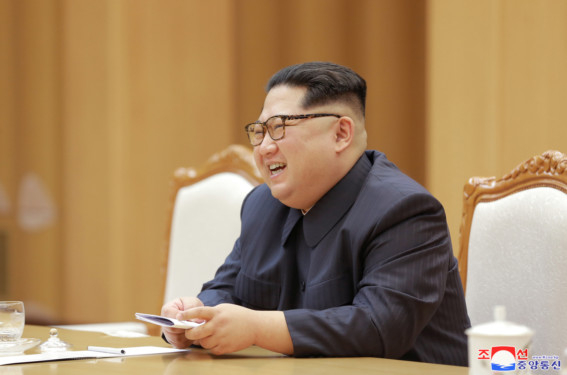
East Asia’s geopolitical landscape is changing fast — faster than anybody could have imagined even a year ago. Today, the world, perhaps, stands just a step away from ending the Korean War formally, thus raising the prospect of permanent peace in the Korean peninsula that will fundamentally impact Indo-Pacific’s strategic equilibrium.
A flexible America, progressive South Korean leadership and an amenable North Korea, in addition to some critical factors like the April 27 inter-Korean summit, the proposed United States-North Korea diplomatic engagement — a landmark event in itself that may well become the defining one in contemporary history — as well as the recently held China-North Korea consultation offers new hope for a breakthrough in a long-drawn crisis.
The two Koreas — split by history and ideology — marching under a united flag at the 2018 Winter Olympics last February was the first telltale sign of thaw in relations between the separated nations locked in sibling rivalry since the end of Second World War. Surely, breaking the ice to overcome a decade and half’s diplomatic stalemate and recast the course of history is no child’s play and calls for out-of-the-box thinking.
Skand Ranjan Tayal, an expert on Korean affairs and former Indian ambassador to South Korea, concurs that it is not easy to reconcile the diverse strategic objectives of the entrenched stakeholders, as peace or for that matter denuclearisation has different connotations for the respective parties.
For Pyongyang, easing of biting sanctions is top on the agenda, says Tayal, adding, Seoul, meanwhile, may not be looking for denuclearisation in the immediate future, being resigned to accepting a nuclear neighbourhood. Tayal and his colleagues in the Indian diplomatic establishment are fairly convinced that North Korea will not surrender its nuclear capability anytime soon, to pre-empt any externally induced regime change attempt.
And US President Donald Trump, according to the senior Indian diplomat, will be more inclined to restricting North Korea from acquiring lethal capacity to strike at mainland America under his watch, rather than clamouring for denuclearisation in the Korean peninsula, which may compel Washington to eventually withdraw its nuclear umbrella from over South Korea and Japan as a quid-pro-quo. Dubbing South Korean President Moon Jae-in’s attempt for Korean rapprochement as “Sunshine Policy 2.0” — an extension of the 1998 Comprehensive Engagement Policy towards North Korea pursued by Kim Dae-Jung and Rho Moo-hyun under their presidency — Tayal contends that the point of departure for the current inter-Korean dialogue will be the 2007 eight-point peace agreement signed in Pyongyang.
As the interlocutors remain busy, choreographing the peace process in minute details, New Delhi will be observing the associated developments — particularly Japan’s reaction if Trump and the world accept a nuclear North Korea — very keenly. After all, Tokyo acquiring nuclear weapons will be strategically beneficial for India, vis-a-vis China, opines Tayal.
As the Far East waits with bated breath for a positive outcome, can the reasonably heartening developments in Korean peninsula breathe life into the moribund India-Pakistan peace process? Sharat Sabharwal, former Indian high commissioner to Pakistan feels it is premature to read too much into the Korean scenario, though acknowledging that it does highlight the importance of focused engagement in defusing tensions even in the most complex situation.
The brighter side of an otherwise gloomy picture is that of the national security advisers (NSA) of India and Pakistan engaging each other constructively to discuss contentious issues out of public glare. But is it enough to create a cordial atmosphere necessary for the conclusion of a permanent armistice to resolve India-Pakistan tension, having its genesis in the 1947 partition of the Indian subcontinent?
Sabharwal is optimistic that this high-level contact may result in cessation of hostilities on the tensed frontier, reduction in levels of violence and gradual movement towards negotiation, but warns at the same time that complete normality in relations between the quarrelling South Asian neighbours will remain a pipe-dream without a change in Pakistan’s internal dynamics or softening of Islamabad’s posture towards India.
The distinguished former Indian envoy to Pakistan favours a combination of structured dialogue coupled-with discreetly exercised deterrence for managing the complex and hostile relationship. “Our aim should be to nudge Pakistan, even if incrementally, in a constructive direction on matters such as trade and cross-border confidence-building measures, while continuing to discuss the more intractable issues to look for mutually acceptable, pragmatic and forward-looking solutions,” asserts Sabharwal, while emphasising the necessity of keeping the channel of communication open with the not so insignificant body of opinion in Pakistan, favouring a stable relationship with India.
However, Salman Bashir, Pakistan’s former foreign secretary and high commissioner to India, does not sound too optimistic. “I wish I could wholeheartedly say that India and Pakistan will turn the corner and look beyond zero-sum games to the dividends of peace based on mutual respect and interests. Unfortunately, this may not happen soon” laments Bashir, who believes that domestic political considerations, especially in India, will preclude resumption of a meaningful diplomatic process in the days ahead.
Though the eminent Pakistani diplomat advocates reinvigorating regional cooperation — by way of holding the South Asian Association for Regional Cooperation (Saarc) summit in Islamabad, stalled after the 2016 Uri terror attack — for unlocking the bilateral process, Sabharwal seems to be more cautious in entertaining any hope of early establishment of seamless intra and Inter-Regional trade and transit connectivity — linking Central Asia with South-East Asia via Saarc — because of Pakistan’s stance.
Seema Sengupta is a journalist and columnist based in Kolkata, India.









